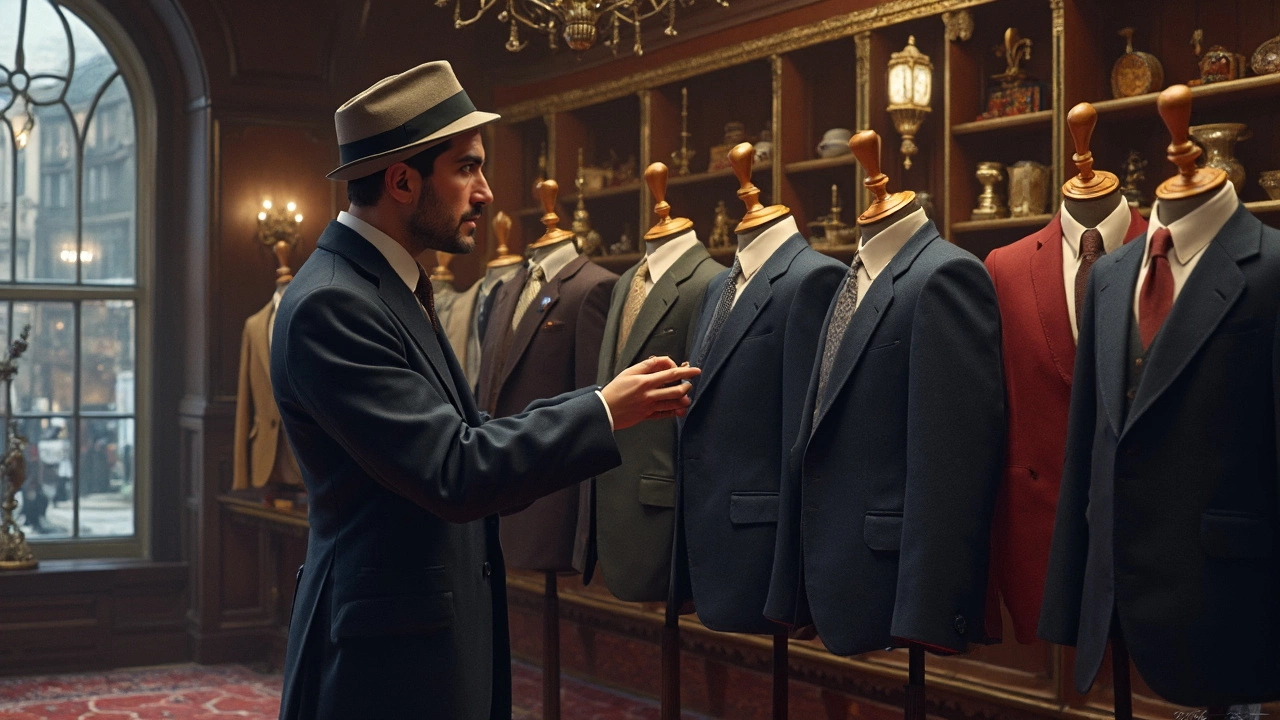Suit Quality: What Makes a Suit Truly Great?
When talking about suit quality, the overall standard of a suit based on its material, construction, and how it looks on you. Also known as suit craftsmanship, it determines whether a suit feels comfortable, lasts long, and makes a strong impression. The three pillars that shape suit quality are Fabricthe textile that forms the suit’s body, Tailoringthe method of cutting and stitching the garment and Fithow the suit conforms to the wearer’s shape. Understanding how these elements interact helps you spot a well‑made suit and avoid cheap imitations.
Key Factors That Shape Suit Quality
First, the fabric sets the stage. Natural fibers like wool, cashmere, and linen each bring distinct traits. Wool offers breathability, natural stretch and year‑round wearability, while cashmere adds a soft, luxurious feel but can be prone to pilling. Weight matters too – light‑weight fabrics (8‑9 oz) suit summer events, whereas heavier twill (13‑14 oz) works for winter or formal occasions. The weave, whether a smooth worsted or a textured herringbone, influences drape and visual depth. High‑quality suits usually list the fiber content clearly and avoid synthetic blends that feel cheap or shrink after washing.
Second, tailoring turns fabric into a garment. Hand‑stitched canvassing inside the jacket creates a natural roll and better shape retention compared to fused interlinings that can crack over time. Look for stitch counts of at least 10‑12 stitches per inch on lapels and pockets – that’s a sign of skilled workmanship. Shoulder construction is another tell‑tale: a genuine shoulder roll (often called a “soft shoulder”) shows the suit was built to move with you, while heavily padded shoulders feel rigid. Details like hand‑stitched buttonholes, functional cuffs, and pick‑stitching along lapel edges highlight attention to detail.
Third, fit is where all the effort shows or falls flat. A well‑fitted suit follows the natural line of the shoulders, lies flat on the chest, and tapers gently at the waist. Sleeve length should reveal about a quarter inch of shirt cuff, and trouser break should be minimal – too much fabric creates a sloppy look, too little looks unfinished. Even the best fabric and tailoring can’t rescue a poorly fitted suit, so precise measurements or a professional alteration are essential. Pay attention to the jacket’s shoulder seam; if it sits past the natural edge of your shoulder, the tailoring likely missed the mark.
Finally, the overall suit construction ties fabric, tailoring, and fit together. Full‑canvassed jackets, hand‑sewn lapels, and functional vents allow the garment to breathe and move. A single‑stitched lining inside the jacket adds durability without bulk. Quality suiting also includes reinforced buttonholes, sturdy thread, and a clean finish on seam allowances. When every component is considered, the suit not only looks sharp but also endures daily wear and special occasions alike.
Now that you know what to look for – from fiber type to stitch count and the right silhouette – you’re ready to evaluate any suit you encounter. Below you’ll find a curated set of articles that dive deeper into each of these aspects, give you practical tips for buying, caring for, and styling high‑quality suits, and even compare popular brands. Keep reading to sharpen your eye and make smarter choices next time you shop.
- Cleo Fairchild
- Jun, 28 2025
- 0 Comments
Is $200 a Fair Price for a Suit? What to Expect, Quality Comparison & Real-World Value
Is $200 for a suit worth it? Get the real scoop on what you actually get, information on quality, value, and tips to help you make a smarter choice and shop confidently.
- Cleo Fairchild
- Feb, 16 2025
- 0 Comments
What Should You Pay for a Good Suit?
Buying a men's suit can be a daunting task, especially when it comes to determining how much to pay for quality. From fabric options to tailoring details, this article explores the key factors that influence suit pricing. Learn how to spot a high-quality suit, what to look for in terms of fit and craftsmanship, and smart shopping tips to maximize your budget. Whether you're buying your first suit or adding to your collection, get equipped with insightful advice to make an informed decision.

